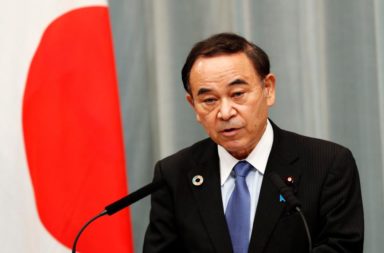Developing Inequality within and among countries is a persistent cause for concern, despite progress in some areas. Income inequality continues to rise in many parts of the world, even as the poorest 40 per cent of the population in most countries experience income growth.
Greater focus is needed to reduce income and other inequalities, including those related to labour market access and trade. Specifically, additional efforts are needed to further increase zero-tariff access for exports from poorer countries, and to provide technical assistance to LDCs and small island developing States seeking to benefit from preferential trade status.
UNDP India Resident Representative Shoko Noda writes in his opinion piece for Indian Express that India has made so much progress over the past 30 years — and the improvements have been substantial. Yet, there are significant concerns today, borne out by data, that the dramatic strides made in reducing extreme poverty did not reduce inequality. In fact, inequality has widened. A flurry of recent estimates, ranging from income inequality data from the India Human Development Survey and wealth inequality numbers by Credit Suisse to distributional income accounts by economists Lucas Chancel and Thomas Piketty, indicate that economic disparities have grown along with the GDP. To put it simply, while the poor have indeed benefitted from India’s economic success, the rich have garnered a greater share of the spoils. Indeed, Oxfam’s inequality estimates from earlier this year suggest the top 10 per cent of the Indian population holds 77 per cent of the total national wealth.
Inequality is not just about disparities in wealth distribution. A large number of Indians not only have very low income, but their opportunities for healthcare, education and social security are dreadfully inadequate. UNDP’s 2019 Human Development Report (HDR) explores precisely these inequalities in human development, by going beyond income and identifying the deep-rooted systemic drivers of inequality. In so doing, the report reminds decision-makers of the importance of providing basic services to their people, and of equipping them to live with dignity.
Further, the report underlines that poor people should be protected from the fallout of climate change and benefit from modern breakthroughs in artificial intelligence and robotics.
Today, the odds are clearly stacked, in a wide range of ways, along gender, linguistic, class and sexual orientation lines. The HDR finds, for instance, that in India the share of both men and women biased against gender equality has risen, indicating a backlash against women’s empowerment. While traditionally vulnerable communities, such as the Scheduled Castes and Scheduled Tribes, are catching up with the rest of society in primary education, they are falling further behind when it comes to advanced (12 years or more) education. Most now have access to mobiles but few have computers. And too many people are still just one illness away from poverty.
The 2019 Multidimensional Poverty Index — produced by UNDP and the Oxford Poverty and Human Development Initiative — finds that over 270 million Indians were taken out of multidimensional poverty in the decade between 2005-06 and 2015-16. Encouragingly, the territories that were lagging behind, notably Bihar and Jharkhand, were able to catch up quite significantly.
Similarly, since the turn of the century, per capita income has nearly tripled; life expectancy at birth has increased by nearly seven years; and children are staying in school for at least two years longer. India has invested in important building blocks to equip its people to thrive rather than just survive.
Today, India is no longer a country languishing largely in extreme poverty. It is a country with pervasive inequality, pockets of deep deprivations and vulnerable populations. India is, of course, pivotal to the world’s achievement of the Sustainable Development Goals (SDGs) by 2030. To achieve the SDGs, one has to recognise existing inequality and continuously eliminate the structural factors that create inequality.





